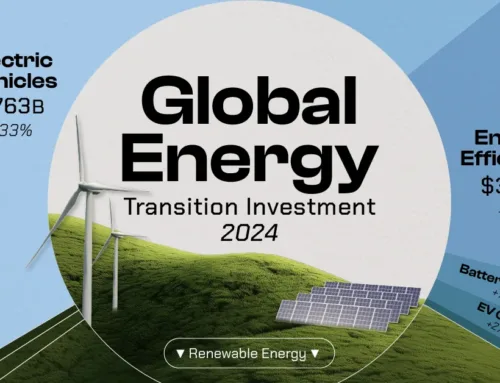White Hydrogen Hype Heats Up as Green Dreams Fade
April 29, 2025
First it was grey, then it was blue, later it was green, now it’s white—these color codes for types of hydrogen depending on sourcing have seen a lot of hype in recent years.
Grey hydrogen produced from fossil fuels and blue hydrogen produced from natural gas with accompanying carbon capture and storage (CCS) are by no means clean energy sources.
The cleanest type of hydrogen production, via electrolysis to separate water molecules using renewable electricity – color-coded green hydrogen – was the best bet for companies venturing into the clean energy technology space, including some of the biggest international oil and gas firms.
But several years into the green energy hype, costs are still prohibitively high, transportation of hydrogen is still a challenge, and Big Oil is losing faith in green hydrogen becoming cost competitive with grey or blue hydrogen anytime soon.
The time has come for white hydrogen – the one naturally occurring under the earth’s surface. White hydrogen, also known as natural hydrogen or gold hydrogen, has gained traction as a type of hydrogen that doesn’t need costly processes of reforming and splitting molecules.
Recent headline-grabbing white hydrogen discoveries have increased the hype around this clean energy source, which doesn’t need human involvement in its making.
However, white hydrogen needs drilling and years of additional research for scientists, start-ups, investors, and backers to understand how accessible and feasible white hydrogen production could be.
Green Hydrogen Woes
In recent months, big mining and oil firms, as well as Bill Gates’ clean tech investment fund, have poured cash into start-ups looking to explore and drill for white hydrogen deposits.
Drilling surely will not be as green as ‘green hydrogen’ production from electrolysis using renewable energy to split the water molecule into hydrogen and oxygen.
Related: World Bank: Get Ready for a Commodity Price Freefall
But production costs of green hydrogen haven’t dropped materially. In fact, green hydrogen is likely to struggle to compete at price level with gray hydrogen made from natural gas at least until 2050—much longer than previously anticipated, according to estimates by research firm BloombergNEF.
Just two years ago, BNEF expected green hydrogen cost production to undercut gray hydrogen by the end of this decade.
Rising costs for electrolyzers mean that in 2050, green hydrogen would cost between $1.60 and $5.09 per kilogram, down from a current cost range of $3.74 to $11.70 per kilogram.
But gray hydrogen currently costs $1.11 to $2.35 per kilogram, and the cost is expected to remain around these levels by 2050.
The International Energy Agency (IEA), the most vocal backer of all things renewable, warned in October that policy and demand uncertainty are slowing green hydrogen adoption.
According to the agency, the main reasons for the slow uptake of low-carbon hydrogen “include unclear demand signals, financing hurdles, delays to incentives, regulatory uncertainties, licensing and permitting issues and operational challenges.”
Investors Bet on White Hydrogen
Green hydrogen’s production costs have stayed stubbornly high through the years with a range as wide as $6 per kilogram (kg) to $12 / kg, due to the need for high availability of renewable power for electrolysis, Wood Mackenzie said last year. Green hydrogen will also depend for years on “substantial subsidies” to work towards a commercial threshold in the range of $3/kg, WoodMac’s analysts say.
White hydrogen produced at scale from reservoirs close to end-user markets could be delivered well below $1/kg, according to WoodMac.
With slow uptake of green hydrogen and major energy firms ditching plans to build green hydrogen projects and pipelines, investors are turning to white hydrogen.
Early this year, BP Ventures, the venture capital arm of oil and gas supermajor BP, announced the closure of a first tranche of series-A funding for Snowfox Discovery, alongside co-investors Oxford Science Enterprises and mining giant Rio Tinto. The investment aims to enable Snowfox Discovery to accelerate the development of its core technology, expand operations, and build a significant inventory of global natural hydrogen opportunities, bp Ventures said.
Last year, mining giant Fortescue invested $21.9 million in buying a strategic stake in HyTerra. Thanks to the funding, the start-up has just successfully spudded an exploration well at a Kansas white hydrogen exploration program. HyTerra is also doing a seismic survey, to support prospect analysis and drilling locations in the second half of 2025.
In Australia, Whitebark Energy has just launched critical work activities on the Rickerscote Prospect, where resources are estimated at 710 million Kg of white hydrogen, 97 Bcf of helium, and 153 million barrels of oil equivalent.
“With the potential of giant-size resources in natural ‘white’ hydrogen hydrocarbons and helium, success at Alinya could position Whitebark at the forefront of a new era in clean energy and Australia’s energy security,” Whitebark said.
In France, where giant white hydrogen deposits have been found over the past two years, French natural hydrogen exploration company Mantle8 closed last month a $3.87 million (3.4 million euros) seed financing round with investment from Kiko Ventures and Bill Gates’ Breakthrough Energy Ventures Europe (BEV-E).
Mantle8 says it can identify with its proprietary technology optimal natural hydrogen reservoirs. It targets hydrogen production at $0.80/kg – “a price point that could revolutionize the clean energy market.”
Eric Toone, chief technology officer at Mantle8 backer Breakthrough Energy, told CNBC, “If we have enough hydrogen and it’s cheap enough, we can do almost anything. We can use it to make metals, make fuels, you could even make food, and all with far fewer emissions than conventional approaches.”
Yet, white hydrogen is not the immediate answer to cheap, clean hydrogen. The industry is in its very early stages. It’s uncertain how much hydrogen could be reached and extracted with the drilling techniques. It’s uncertain how the hydrogen can be stored and transported to distant end-consumer markets.
White hydrogen would likely displace some blue and green developments. But technology, capital, and regulation hold the key to whether white hydrogen could become a new clean energy industry, WoodMac analysts say.
By Tsvetana Paraskova for Oilprice.com
More Top Reads From Oilprice.com
- China Extends Its Suspension of U.S. LNG Imports
- Spain and Portugal Hit by Widespread Blackout
- Scotland’s Sole Oil Refinery Shuts Down for Good
Search
RECENT PRESS RELEASES
Related Post




